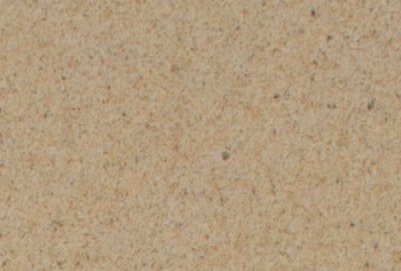York stone
Its colour of depends on the minerals within its makeup and differs throughout the quarries from which it is mined. From a copper and beige camourflage look to pure beige look. In the quarry, on the outsideit has a rusty red to brown in colour and on the inside after cutting, a sandy yellow colour. Copper bands known as concretion lines can also be seen on the inside of the blocks when exposed with sawing or riving. It also depends on the age of the stone and turns darker with weathering. It is popular as slabs and constructing houses/walls, with reclaimed york stone valued for its weathered look.

A compressed York stone with sedimentary layers not visible. 'Clean stone' appearance.
Supplier: CB Stone Sales Ltd. West Yorkshire HX3 6US
Its versatility, means it has been extensively used in a wide range of uses from floor slabs to constructing walls/buildings as well carved monuments for centuries.
Two types of York stone from quarries:
Riven York stone comes from splitting the block apart in the quarry, at its natural seam. This is used for floor slabs, wall and building construction.
Sawn York stone comes from a more compact layer where the sedimentary layers are not visible. This type is used for carved masonry work.
Stone synopsis:
Price:
Price for delivered quarried stone: £
Price per letter carved: £
Difficulty to carve:
Easy to carve. Getting fine detail is easy as up close it has a smooth texture, due to no visible sedimentary layers and a low shell content.
Use:
Traditional stonemasonry for the stone. The 'riven' variety is used for flooring and walls due to strength, durability, and visible sedimentary layers.
Durability:
1mm to 2mm per 100 years.
Quarry (open) location: West Yorkshire. Supplier: CB Stone Sales, West Yorkshire.
Tips:
Poor quality jointing to be avoided. Where the mortar (often based on hard ordinary Portland cement) is applied to the face only, leaving voids behind. The mortar-stone bond typically fails and hairline cracks develop, becoming more prominent with time.
Pros:
Easy to carve, with a great colour giving great detail/definition.
Cons:
As it is a limestone, it shouldn't be waterlogged for a prelonged period of time as it will brown its aesthetics.